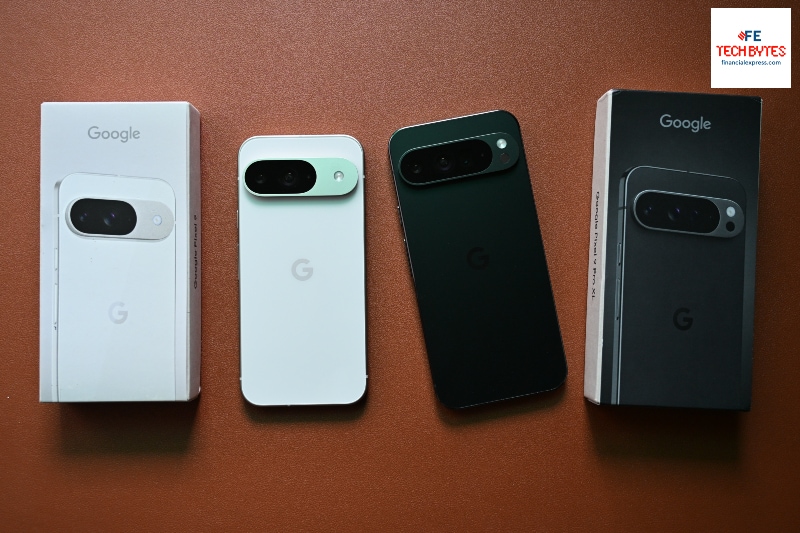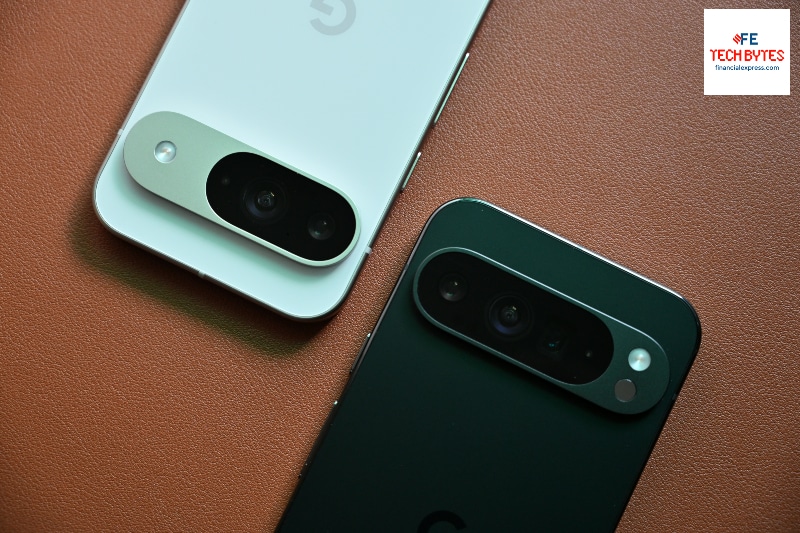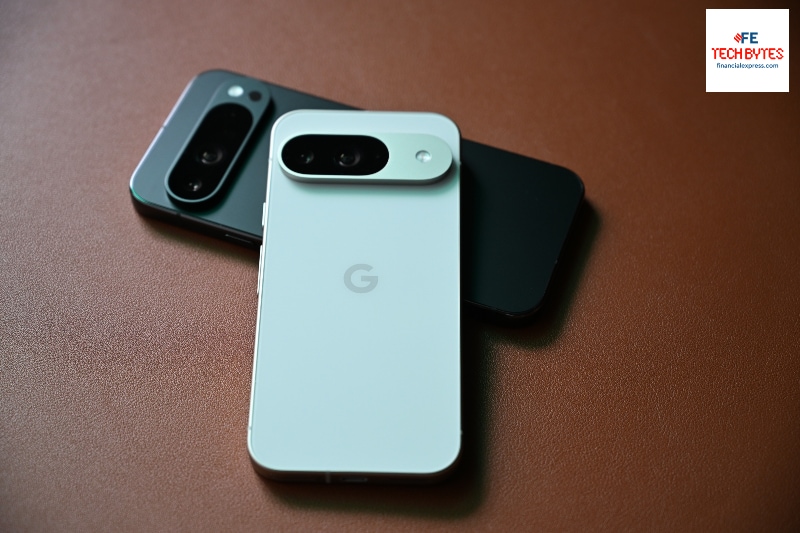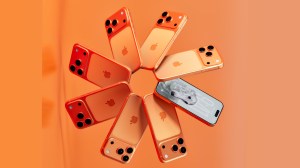The Google phone, be it Nexus or Pixel, since inception has had a very select clientele. Mostly because it was always built that way. The focus was almost exclusively on offering the best of Android—in its purest, most unadulterated form—and let people who would want such a phone, have access to latest and greatest features before anybody else. On a good day, these phones would shoot some stellar photos. It was the best of times for the geek fleet.
But all good things must grow and evolve with time. For change is the only constant, as they say. This year’s Pixel phones—the Pixel 9, 9 Pro, and 9 Pro XL—are a perfect embodiment of that. Not only are there more Pixel phones than ever before including a flashy new foldable called the Pixel 9 Pro Fold, but Google also surprised one and all by launching them before Apple could unleash the iPhone 16 (historically, these phones have launched right after).
It can mean one of two things: Google was feeling the heat, or it was super confident about its product. Having used all these phones for a while now, I can say, it’s equal parts both. The pressure to deliver on hardware—and even more importantly, on AI—has pushed Google to make some of the best Pixel phones it has ever made. There may be three new Pixel phones in 2024 (plus a foldable), but each one stands out on its own without cannibalising the other. Kind of like how Apple has been able to do with its iPhones lately. Samsung has been trying for years, but not many would have thought, Google—of all brands—would crack this code.
Getting into the basics
The Pixel 9 is your default entry-level Pixel phone this year, a sequel to last year’s Pixel 8. We’ll get into the differences in just a bit. The Pro Pixel has been split into two in this generation. There’s a Pixel 9-size Pixel 9 Pro and a second 9 Pro XL which is essentially a follow up to last year’s Pixel 8 Pro. Regardless of the naming, the 9 Pro is actually the new entrant, not the XL. It’s the Google equivalent of the iPhone 16 Pro. It’s the same size too, i.e., 6.3-inch.
Google Pixel 9/Pixel 8: 6.3-inch/6.2-inch
Google Pixel 9 Pro: 6.3-inch
Google Pixel 9 Pro XL/Pixel 8 Pro: 6.8-inch/6.7-inch
Especially on the Pixel 9 Pro XL, Google has greatly reduced the bezels on all sides and so, it occupies almost the same footprint as the Pixel 8 Pro. And it has made it slightly thinner (8.5mm Vs 8.8mm) which is always appreciated. The effect is a bit less pronounced on the Pixel 9 although the bezels here have received some shrinkage as well (more importantly, they are spread out evenly, which was not the case with the Pixel 8).

The design is a complete refresh across the board. The iPhone inspiration is definitely there, but only on the front and sides—they are all flat with rounded corners. But look, let’s be honest, it’s a template that just works without any hassle. Maybe more brands should try it out. Google has done it—after several years of chasing mindless curves—and I’m all for it. Looks may be subjective, but ergonomics are not. These are the first Pixel phones in a long time I haven’t had a problem dealing with on day-to-day basis. They fit nice and secure in the hand, giving both mind and body a sense of comfort curved-screen smartphones can never give.
The back is all brand new in every sense of the word, even from a Pixel phone perspective. The iconic visor has been retired—but hopefully it is not dead, I quite liked it—and replaced by a pill shaped housing that reminds me of Google’s Search widget. The metal and glass assembly is massive (even more so on the Pro models where there’s an additional telephoto) but at least it doesn’t make the phones wobble.
The build materials have been upgraded to include stronger Corning Gorilla Glass Victus 2 on both sides. The Pro models have a matte finish on the back and a glossy frame made from metal. The Pixel 9 has a glossy back and a matte frame, also metal. All the phones are IP68 rated.
Google calls its Pixel displays ‘Actua’ these days. The Pro devices have a more superior ‘Super Actua’ which essentially means that it’s LTPO meaning that they are more efficient and can go from 1Hz-120Hz depending on content. The Pixel 9’s can only switch between 60Hz-120Hz. Either way, Google doesn’t give you any granular control over it, just a single toggle called ‘smooth display’ in settings to turn high refresh rate on and off.
Pixel 9
Pros
- Beautiful design
- Bright, colourful display
- Fast performance, useful AI
- 7-year software support
- Good battery life
Cons
- AI is out of control
- No telephoto
- Rivals charge quickly
The Pixel 9’s screen has a lower 1080p resolution while the 9 Pro and 9 Pro XL are denser at 1280 x 2856p and 1344 x 2992p respectively. The brightness has been bumped up across the entire lineup, a quality-of-life improvement that is very evident when you’re out and about in direct sunlight. Another big useful change is the use of an ultrasonic reader for biometrics which is fast and reliable, more so than anything from Google in the past.
Google Pixel 9/Pixel 8: Up to 1,800 nits (HDR), 2,700 nits (peak)/Up to 1,400 nits (HDR), 2,000 nits (peak)
Google Pixel 9 Pro: Up to 2,000 nits (HDR), 3,000 nits (peak)
Google Pixel 9 Pro XL/Pixel 8 Pro: Up to 2,000 nits (HDR), 3,000 nits (peak)/ Up to 1,600 nits (HDR), 2,400 nits (peak)
Getting serious
The Tensor G4 inside these new Pixel phones is mostly good news. After years of persistence and hard work, Google has got it right. (Which makes me excited for the G5 since rumour has it that it would be made by TSMC using a more advanced 3-nanometre node. Samsung’s 4nm process is used in the G4.) Google is also being open and transparent with the communication this time. Not overselling it with lofty claims and promises. The G4 isn’t designed to beat benchmarks but to meet its use cases like for instance, improving the speed and efficiency of opening apps.
Google Tensor G4 (Samsung 4nm, 8-core): 1×3.1 GHz Cortex-X4, 3×2.6 GHz Cortex-A720, 4×1.95 GHz Cortex-A520; Mali-G715 MC7
Google Tensor G3 (Samsung 4nm, 9-core): 1×3.0 GHz Cortex-X3, 4×2.45 GHz Cortex-A715, 4×2.15 GHz Cortex-A510; Immortalis-G715s MC10
Qualcomm Snapdragon 8 Gen 3 (TSMC 4nm, 8-core): 1×3.39 GHz Cortex-X4, 3×3.1 GHz Cortex-A720, 2×2.9 GHz Cortex-A720, 2×2.2 GHz Cortex-A520; Adreno 750
Data is suggestive. Synthetic benchmark scores are closer to the older Snapdragon 8 Gen 2, while phones with the 8 Gen 3 and even the Dimensity 9300, absolutely smoke the G4 when it comes to raw power. But you probably knew that already.

What’s new you ask? It is how well Google has optimised everything so regardless of whether it is the Pixel 9 or top-shelf 9 Pro XL, the real-world performance is solid and reliable. I had to really push these phones in order for them to show some sign of heating, a far cry from the Pixel 8 and 8 Pro which were notorious for overheating from the start. All this bodes well for battery life, too. It surely helps that the Pixel 9 and 9 Pro XL pack slightly bigger batteries, but getting a day out of them (sometimes more) consistently, is more than the sum of their parts.
Google Pixel 9/Pixel 8: 4,700mAh/4,575mAh
Google Pixel 9 Pro: 4,700mAh
Google Pixel 9 Pro XL/Pixel 8 Pro: 5,060mAh/5,050mAh
The Pixel 9 and 9 Pro support up to 27W fast wired charging (same as the Pixel 8) while on the 9 Pro XL, it is 37W (8 Pro was a bit slower at 30W). Wireless charging rates can go up to 15W on the Pixel 9 (8 was a bit faster at 18W), 21W on 9 Pro and 23W on the 9 Pro XL (same as the 8 Pro) provided you use it with the second gen Pixel Stand while with other third-party Qi-certified chargers, only 12W is supported.
Are you even real?
The amount of RAM has increased from 8GB in the Pixel 8 to 12GB in the Pixel 9 while on the 9 Pro and 9 Pro XL, it is a whopping 16GB up from 12GB on the 8 Pro. The gains are mostly for AI which the 9, 9 Pro, and 9 Pro XL, have lots. What started off as a recreational activity on last year’s phones has now become a full-time job. In fact, it won’t be wrong to call the Pixel 9, 9 Pro, and 9 Pro XL, the first truly made by Google AI phones. They might just be the best AI phones in the market today.
The question is, how much is too much? Look, there’s no denying the whole bunch of conveniences that AI brings to the table through these phones. Right out of the gate, Google is giving every Pixel 9, 9 Pro, 9 Pro XL, and 9 Pro Fold buyer, free access to Gemini Advanced for a year which when you go buying separately, will cost you a hefty Rs 23,400 as part of the Google One AI Premium plan. Getting 2TB storage alone makes it a sweet deal for me even before I get into the AI stuff. This reminds me of Jio giving away free SIM cards at launch. The strategy is loud and clear. Google wants you to get hooked on to its AI, the only difference is that, this is meant for a more elitist crowd since you do have to buy the phone first. Fair game.

When I say how much is too much, I am referring to both scale and use case. From a scale perspective, there are three different apps in each of these phones, to use Google’s three marquee AI features. One is Gemini—Google’s posterchild—an AI chatbot that’s your new Google Assistant. You can talk to it too and have a free-flowing conversation like you would with another person through a newly integrated feature called ‘Live.’ We have seen these things in films, to see them for real feels surreal. It’s hard not to get impressed with how far technology has come where a phone could be your confidant. It takes guts to open up, even to a gadget sometimes. But if you can muster the courage and trust Google with your data, you have an option now.
The second big app/feature is Pixel Studio which uses a combination of on-device and cloud-based (Imagen 3) AI to generate photos from text prompts. You can’t generate human faces right now but for anything else, sky is the limit. What’s little concerning is that Google’s AI doesn’t seem to understand or rather respect IP (intellectual property) and is pretty lose with spewing out images that could land someone in hot legal soup.
Last but not the least, is Pixel Screenshots, an organiser for, well, your screenshots. It’s a remarkable concept in that it’s not just a placeholder for your screenshots but it can also sift through the information inside them and give you quick and concise summaries and answers to your queries. Moreover, if you took a screenshot from a webpage, it will remember the URL so you can go back to the link if needed without having to do anything. It will jump all the hoops for you.
Pixel 9 Pro
Pros
- Beautiful design
- Bright, colourful display
- Fast performance, useful AI
- 7-year software support
- Good battery life
- Great cameras for stills
Cons
- AI is out of control
- Videos could be better
- Rivals charge quickly
- Pricey
While each of these apps has their own clear USP and is indistinguishable from the other, opening and closing three different apps every time I need to ask a question or generate a photo or find a screenshot, is not what I expect from an AI phone. It should be just one app. Right now, it seems like a lot of work and I’m not too sure I’m up for it, at least not regularly anyway. But I think that’s okay. Maybe I’ll pick one and use it more. We’ll see.
The camera is another area jam-packed with AI this year. It seems like only yesterday that we were all salivating at the thought of erasing objects from photos, and with the press of a button—and the launch of these new phones—Google has made it all seem like it was hundred years ago. Now, you can ‘add’ a person and also re-frame and re-imagine things in a photo on the fly. Some of it is cool, some downright scary. It’s all fun and games until someone gets hurt. The internet is full of deepfakes these days. A phone that lets you alter reality to ‘this’ extent, is a ticking timebomb. But the solution is not running from the problem, also.

With more and more people slowly getting the ins and outs of AI, with more and more people talking about it, general awareness is growing. AI is too new a term and far beyond logic. A technology like this, this superpower, like all things has its upside and downside. With phones like the Pixel 9 in people’s hands, some might use it for the wrong reasons, but I believe, more people will use it for doing good. To understand, to learn, to get better. But I digress.
Follow FE Tech Bytes on Twitter, Instagram, LinkedIn, Facebook.
The cameras on these new phones are fantastic. Mostly, they are a do-over from last year. The 50-megapixel f/1.68 wide and 48-megapixel 5x telephoto on the Pixel 9 Pro and 9 Pro XL are virtually the same as the 8 Pro’s. The 48-megapixel ultrawide has a brighter f/1.7 lens, which is the only big change so to say. The Pixel 9 expectedly doesn’t have a telephoto but the wide and ultrawide are same as the Pro models. The front camera is a new 42-megapixel on the 9 Pro and 9 Pro XL up from the 10.5MP on the 8 Pro while the Pixel 9 still makes do with the same 10.5MP. The Pixel camera is no longer just a point-and-shoot like it used to be. Especially on the 9 Pro and 9 Pro XL, Google gives you ‘pro’ manual controls while all the Pixel 9 series phones come with elaborate post-shoot editing that lets you do bunch of things to make the most out of your photo. Videos are getting better (the 9 Pro and 9 Pro XL can shoot at up to 8K@30fps) but the iPhones are still better.
Should you buy?
The Pixel 9 series is Google’s most ambitious attempt yet at merging hardware and AI to create a seamless user experience. And they deliver. While in the past, they might seem—and were to some extent—a one trick pony, Google has finally caught up with Apple and Samsung on hardware. The software and AI and the promise of up to seven years of support elevate the experience to a level never seen before on these phones. They are pricey—the Pixel 9 starts at Rs 79,999, the 9 Pro at Rs 1,09,999, and 9 Pro XL at Rs 124,999—but these phones have never been more worth it.







